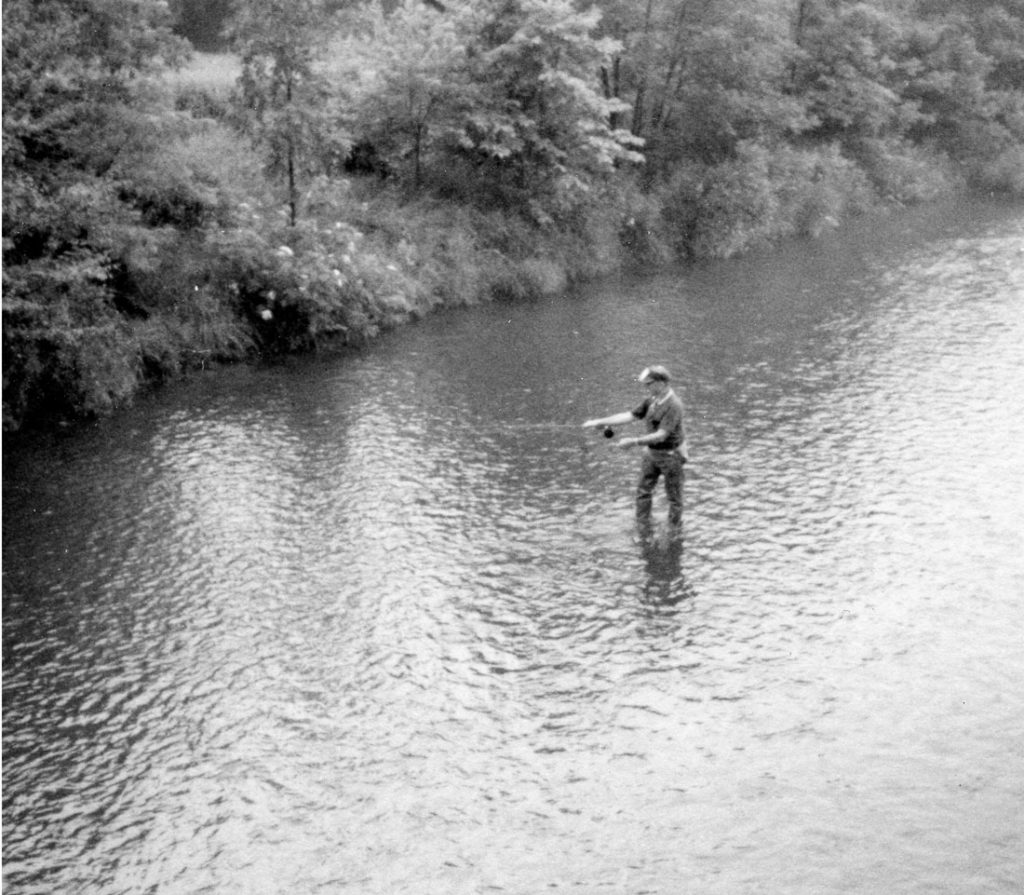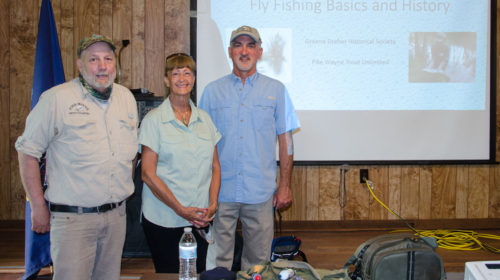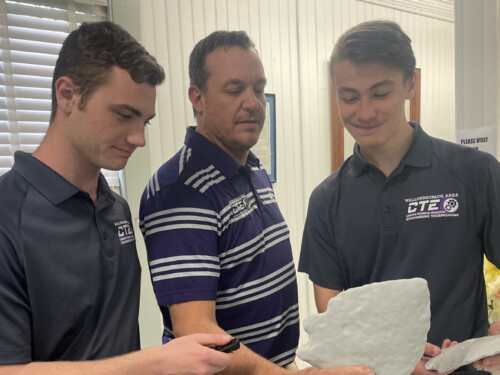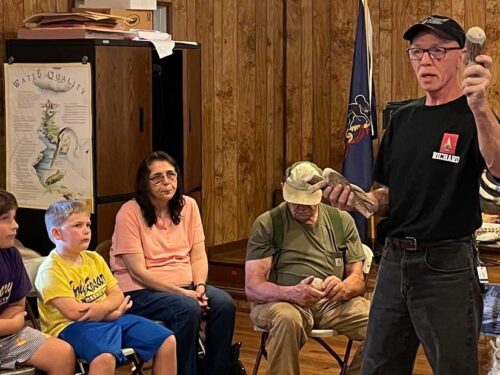The Poconos has a rich trout fishing heritage that continues to this day. In this engaging and informative talk hosted by GDHS at Promised Land State Park on May 22, Pocono angler Gene Shultz shared his passion for fly fishing and his knowledge of the origins of the sport. Representing Pike-Wayne Trout Unlimited, Gene provided tips on choosing the right equipment—from rods and reels to the best lures for the season and hour of the day—and presented a fascinating slide program on the history of fly fishing in the Poconos. On display were a selection of bamboo and fiberglass rods, both old and new, and a collection of colorful flies he had tied himself, which for him is part of the challenge and enjoyment of fly fishing. Marina Swartwood demonstrated fly casting, a graceful technique she practices in trout streams all across the country. “Women are the fastest growing demographic in this grand sport,” she said.
The Poconos are steeped in trout fishing tradition. The abundance of native brook trout and other game fish in our waters was recognized by the pioneer settlers who arrived here in the late 1700s and early 1800s. Some historians believe that American fly fishing actually originated on Pocono waters. As early as 1836, the Henryville House along Brodhead Creek in Monroe County had developed a following of visiting anglers, and the creek was subsequently written up in The Complete Angler, published in 1848, and the American Angler’s Book in 1865. Mixed in among the well-known fly fishermen who frequented the area around the turn of the century to practice the sport were many notable people from the world of sports, entertainment and politics, including Teddy Roosevelt, Gifford Pinchot, John L Sullivan, Lily Langtry, Grover Cleveland, and Benjamin Harrison.
By the 1890s, the years of abuse by the lumber and tanning industries had left Pocono streams polluted and its watershed vulnerable to summer heat. Native brook trout, which prefer cold, spring-fed creeks with places of shaded, slow-moving water, were by then in steep decline. Around the turn of the century Pennsylvania implemented a stream restoration and restocking program, and anglers today are more likely to land a brown or rainbow trout, which have since replaced the native brook trout. Brown trout can be found in Lake Wallenpaupack and in Wallenpaupack Creek when they move into the creek in the fall to spawn.
Today, the Poconos offer some of the best trout fishing waters around. With nearly 7000 miles of streams, the counties of Wayne, Pike and Monroe encompass more than 80 percent of the streams in Pennsylvania that are classified as high quality (HQ) or exceptional value (EV). Wallenpaupack Creek has an EV designation by PA Department of Environmental Protection. Local anglers, as well as groups such as Pike-Wayne Trout Unlimited, are working to preserve the high quality of our waterways.
Gene Shultz, a retired biology teacher at Wallenpaupack High School, learned the art of fly fishing at a young age from his grandfather. He serves as an Environmental Educator at Lacawac Sanctuary, Lackawanna College Environmental Education Center, and at the National Energy Foundation. Gene was accompanied by Paul Ranello, president of Pike-Wayne Trout Unlimited, who spoke about the work being done by the organization he heads to protect the area’s cold-water streams, including the Wallenpaupack Creek.





